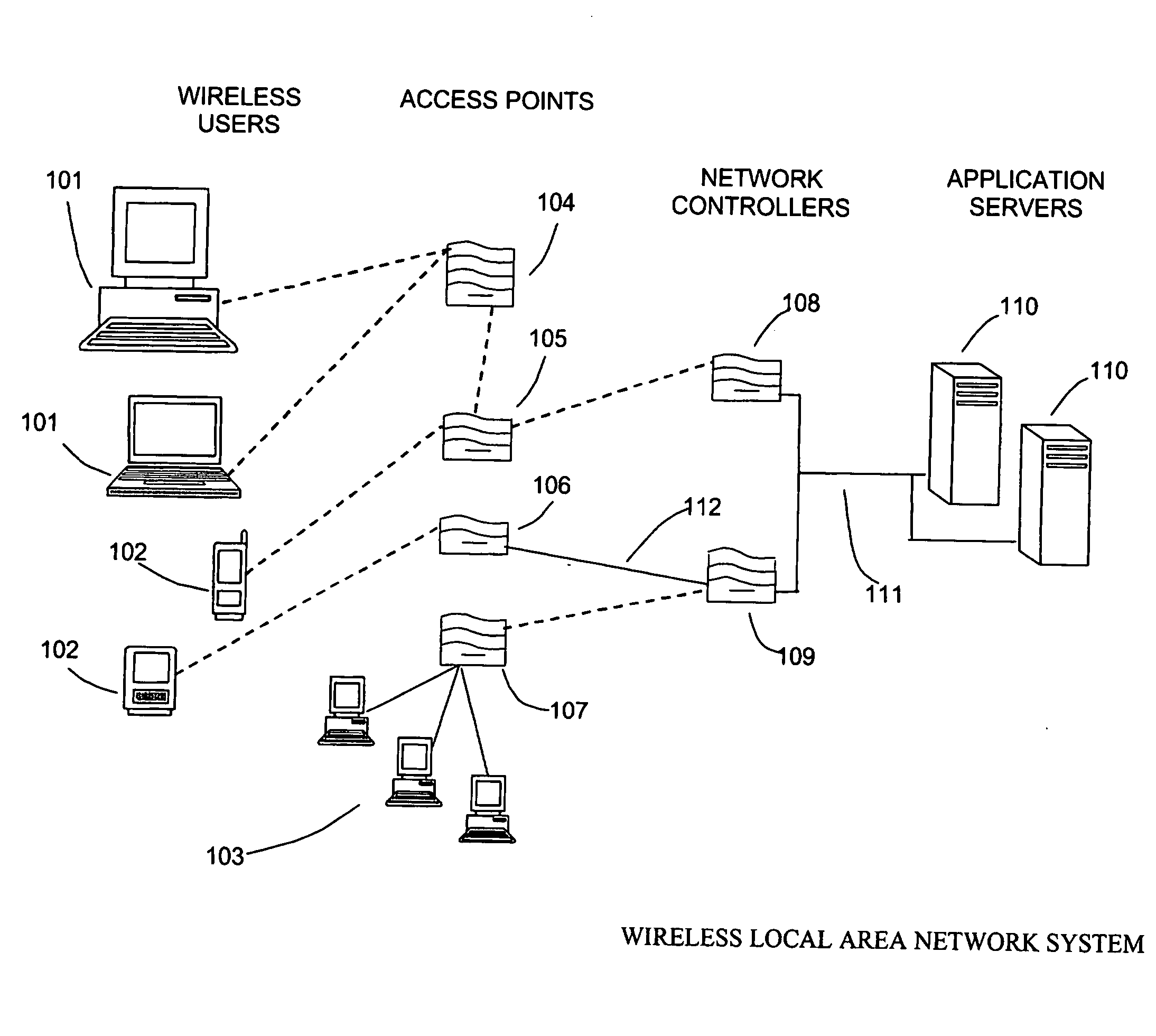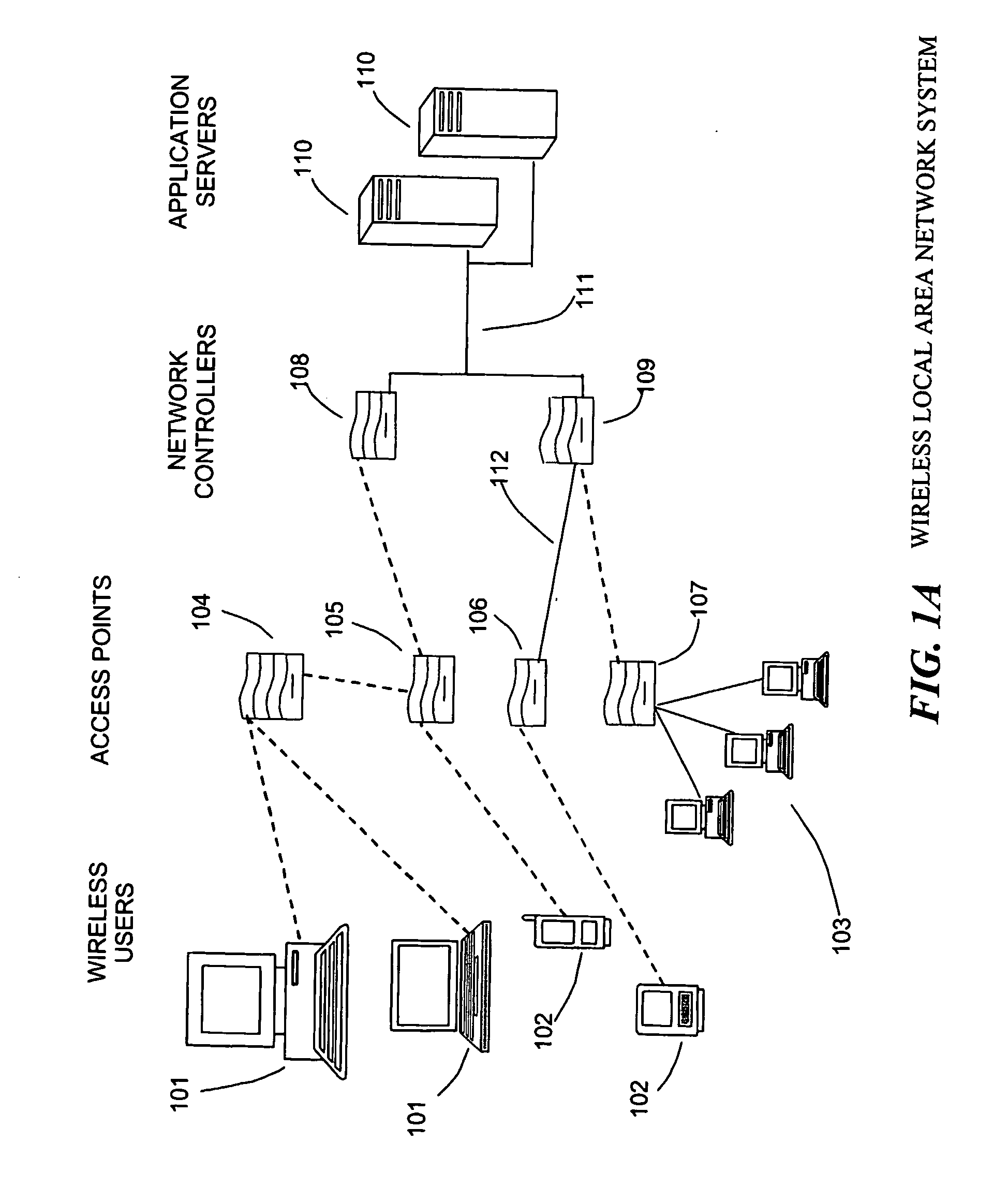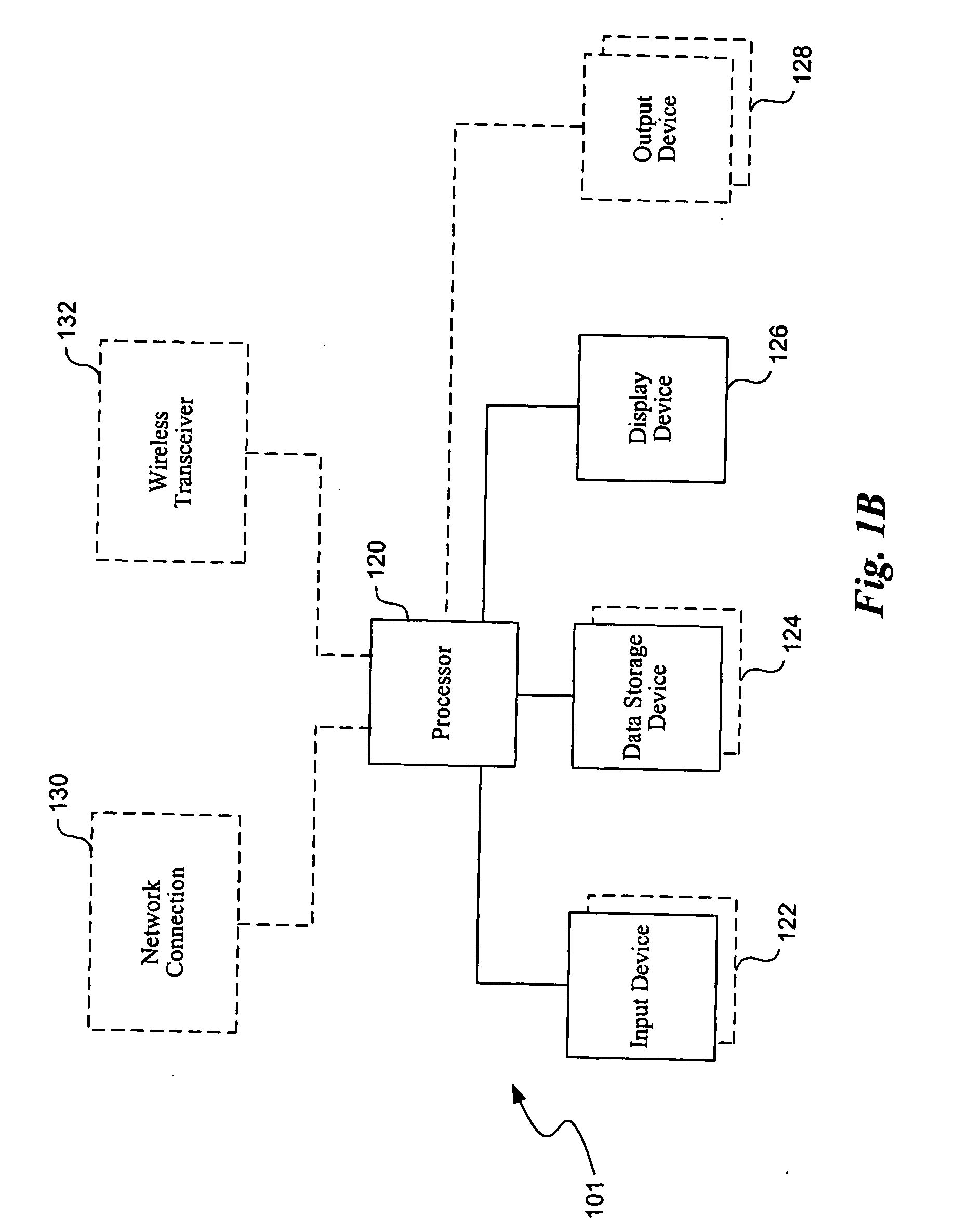Self-configuring, self-optimizing wireless local area network system
a wireless local area network and self-optimization technology, applied in the direction of data switching network, selective content distribution, wireless commuication services, etc., can solve the problems of many difficulties in creating and implementing networks of short-range wireless
- Summary
- Abstract
- Description
- Claims
- Application Information
AI Technical Summary
Problems solved by technology
Method used
Image
Examples
Embodiment Construction
[0017] A wireless local area network system described below solves problems of providing wireless connectivity for a large number of users at low costs for installation and management, with multiple radio-frequency technologies, and high levels of performance, security, robustness and flexibility. It employs a network of “nodes” each of which contains an appropriate set of functional modules to provide at that node the required connectivity services (which can be wired or wireless) and a processor or processors to run the controlling software. The software ensures that nodes are intelligent, self-contained, and act to discover their neighbors. Acting together by means of their distributed intelligence the nodes establish a network of connections that carry data traffic. The software adopts a “mesh” topology for the connections and ensures that routing is optimized, automatically, upon initiation and at frequent intervals thereafter. Thus the system can adjust itself automatically wh...
PUM
 Login to View More
Login to View More Abstract
Description
Claims
Application Information
 Login to View More
Login to View More - R&D
- Intellectual Property
- Life Sciences
- Materials
- Tech Scout
- Unparalleled Data Quality
- Higher Quality Content
- 60% Fewer Hallucinations
Browse by: Latest US Patents, China's latest patents, Technical Efficacy Thesaurus, Application Domain, Technology Topic, Popular Technical Reports.
© 2025 PatSnap. All rights reserved.Legal|Privacy policy|Modern Slavery Act Transparency Statement|Sitemap|About US| Contact US: help@patsnap.com



